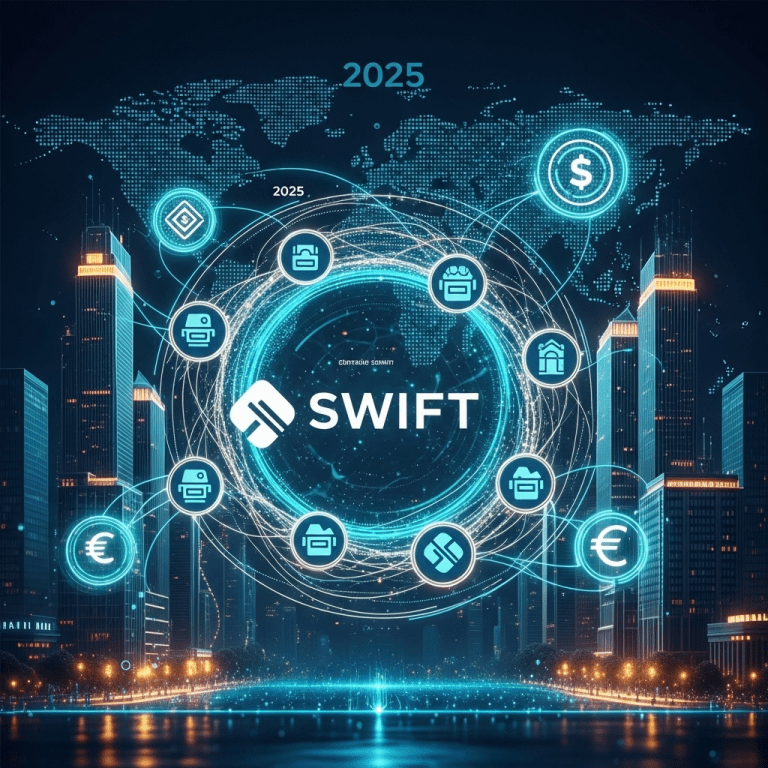As blockchain technology reshapes finance, one pivotal development in 2025 is what SWIFT’s blockchain means for stablecoins and global banks. With the world’s largest interbank messaging system embracing blockchain, the impact on digital currencies and traditional banking is significant.
What SWIFT’s Blockchain Means for Stablecoins and Global Banks: A Paradigm Shift
SWIFT, the backbone of international payments, has announced major blockchain integrations. These aim to streamline cross-border settlements and foster interoperability between banks and digital assets. The change addresses slow settlements, high costs, and limited transparency. SWIFT’s move is seen as a game-changer for stablecoins and banks operating in the digital asset space.Stablecoins: Greater Legitimacy and Interconnectivity
Stablecoins—digital tokens pegged to fiat currencies—have surged in popularity. They are crucial for remittances and decentralized finance. Until now, mainstream adoption was limited by compliance and interoperability challenges. SWIFT’s blockchain network bridges these gaps. Banks and exchanges can transfer stablecoins and settle transactions in real time, while staying compliant with regulations.Opportunities for Regulatory-Compliant Stablecoins
SWIFT’s blockchain enables regulated stablecoins to be used for cross-border trade and settlements. This increases credibility and makes them attractive to institutional investors and multinational corporations. For more analysis, see research on crypto adoption trends.Faster Settlement and Improved Liquidity
SWIFT’s blockchain significantly speeds up settlements. Transactions that once took days can now be completed in seconds. Faster settlements improve liquidity and reduce market risk—benefits crucial for banks handling high-value transfers.Global Banks: Securely Integrating Digital Assets
Integration with SWIFT’s blockchain allows banks to interact with both fiat and digital currencies seamlessly. They can manage stablecoins and potentially central bank digital currencies (CBDCs) in the same secure environment. This avoids the need to build entirely new payment rails.Risk Reduction and Transparency
Blockchain’s immutable ledger enhances transparency. It reduces risks from fraud, operational errors, and regulatory breaches. SWIFT embeds compliance modules like KYC and AML into its platform, simplifying audits. The approach aligns with global digital regulatory standards.Enhancing Cross-Border Collaboration
Cross-border banking often struggles with data silos and fragmented standards. SWIFT’s blockchain standardizes data exchange and settlement logic. This allows banks worldwide to collaborate more efficiently. For ongoing updates, visit leading financial analysis platforms.Challenges and Considerations for 2025
SWIFT’s blockchain rollout faces hurdles. Achieving universal interoperability, regulatory acceptance across jurisdictions, and integration with legacy systems are major challenges. Banks and stablecoin issuers must invest in compliance, cybersecurity, and technical upgrades to fully utilize the platform.Impact on Banking Fees and Revenue Models
As settlements become faster and more transparent, traditional transaction-based revenue may decline. Banks will need to focus on value-added services such as liquidity management, digital asset custody, and compliance consulting.The Road Ahead: Collaboration and Competition
In 2025, SWIFT’s blockchain drives both competition and collaboration in finance. Payment networks, fintechs, and crypto platforms are reevaluating their strategies. This convergence could accelerate innovation in programmable money, automated compliance, and instant remittances.Key Takeaways for Crypto and Banking Professionals
- SWIFT’s blockchain enables stablecoin adoption by legacy financial institutions.
- Banks gain faster settlements, improved transparency, and simplified compliance.
- Regulated stablecoins are set for broader institutional use.
- The transformation benefits businesses, consumers, and regulators alike.









